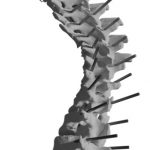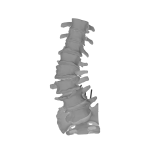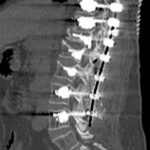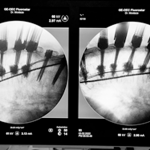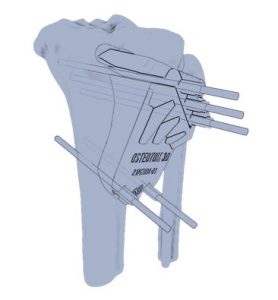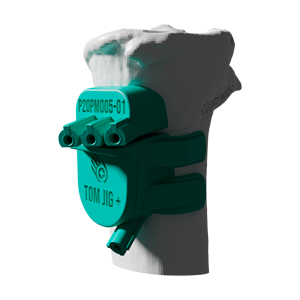Dra. María Teresa Menéndez Crespo
Hospital Universitario 12 de Octubre (Madrid, Spain)
14-year-old girl; she presents scoliosis with right thoracic curvature of 70˚ and left lumbar of 43˚.
Severe scoliosis associated with Marfan syndrome
Instrumented posterior arthrodesis surgery from T3 to L4 and correction of the curves.
TOR JIG ® S : Anatomic biomodel and 14 personalized surgical guides
Marfan syndrome is a connective tissue disease, frequently associated with deformities of the spine and rib cage.
It can cause severe scoliosis and sternal deformities, such as pectus excavatum or carinatum, causing the sternum to protrude or collapse into the chest, restricting lung growth and respiratory function.
Foot and back pain is another common symptom associated with this syndrome. For cases requiring surgery, the use of the TOR JIG® S system allows for quick and precise placement of pedicle screws.
Cooperative planning by the medical and engineering teams is key to anticipating potential complications and tailoring the product for each patient.In this way, success is achieved during surgery.
Surgery planning
- Screws position and orientation are marked according to the surgeon´s prescription.
- 3D anatomical model is made.
- Personalized surgical guides are designed for each case. Finally, the biomodel and the guides are manufactured via 3D printing.
Surgical process
Due to the great deviation of the patient’s anatomy and the large number of vertebrae to be arthrodesed, the surgery was very complex.
In addition, patients with Marfan syndrome have narrow and thin pedicles and significant dural ectasia.The surgeons consulted the biomodel during the intervention, taking measurements and taking references to choose the most appropriate instrumentation.
The surgical guides are individual for each vertebra; this makes it possible to X-ray check if the orientation on the pedicle axis is correct.
This guarantees the adequate lateral angulation of the drilling through the guide, avoiding possible lesions of the spinal nerves and the spinal cord.
The use of the TOR JIG® S system for the preliminary analysis, on the 3D biomodel, of the lateral gap and the individualized diameter of each pedicle was of great help.
Peformance
The final result was a success, without major complications and achieving the planned final correction. The necessary preparation time was clearly shortened and the surgical instrumentation process took only 2 hours. The measured values in the right thoracic curve went from 70˚ to 30˚.
In these patients in particular, it is very important not to break the dura mater and that there is no leakage of cerebrospinal fluid, which causes severe headaches and infections.After 48 hours in the ICU, the patient was transferred to her room and was even able to sit up.
She began to ambulate on the third postoperative day, going back home on the sixth day, with a good general condition and well controlled with oral analgesia.
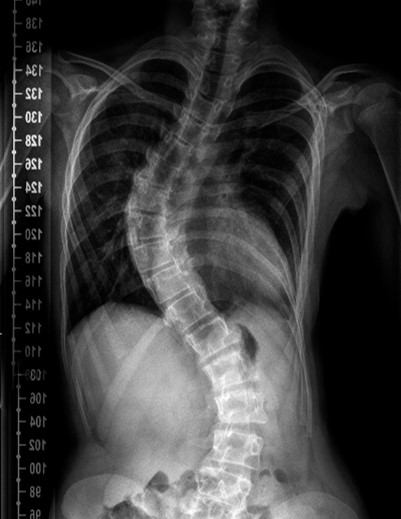
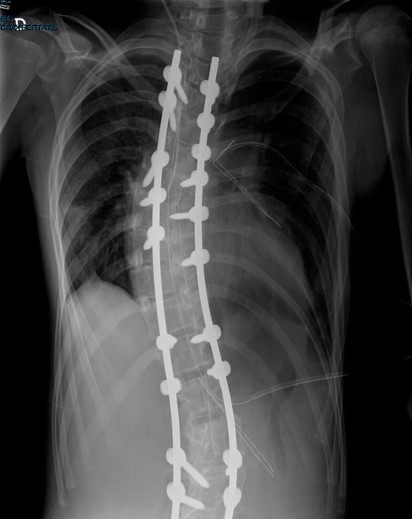
DOWNLOAD OUTSTANDING CASE
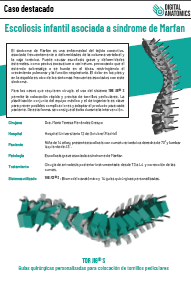
Click on the button to download the full outstanding case in PDF format.

